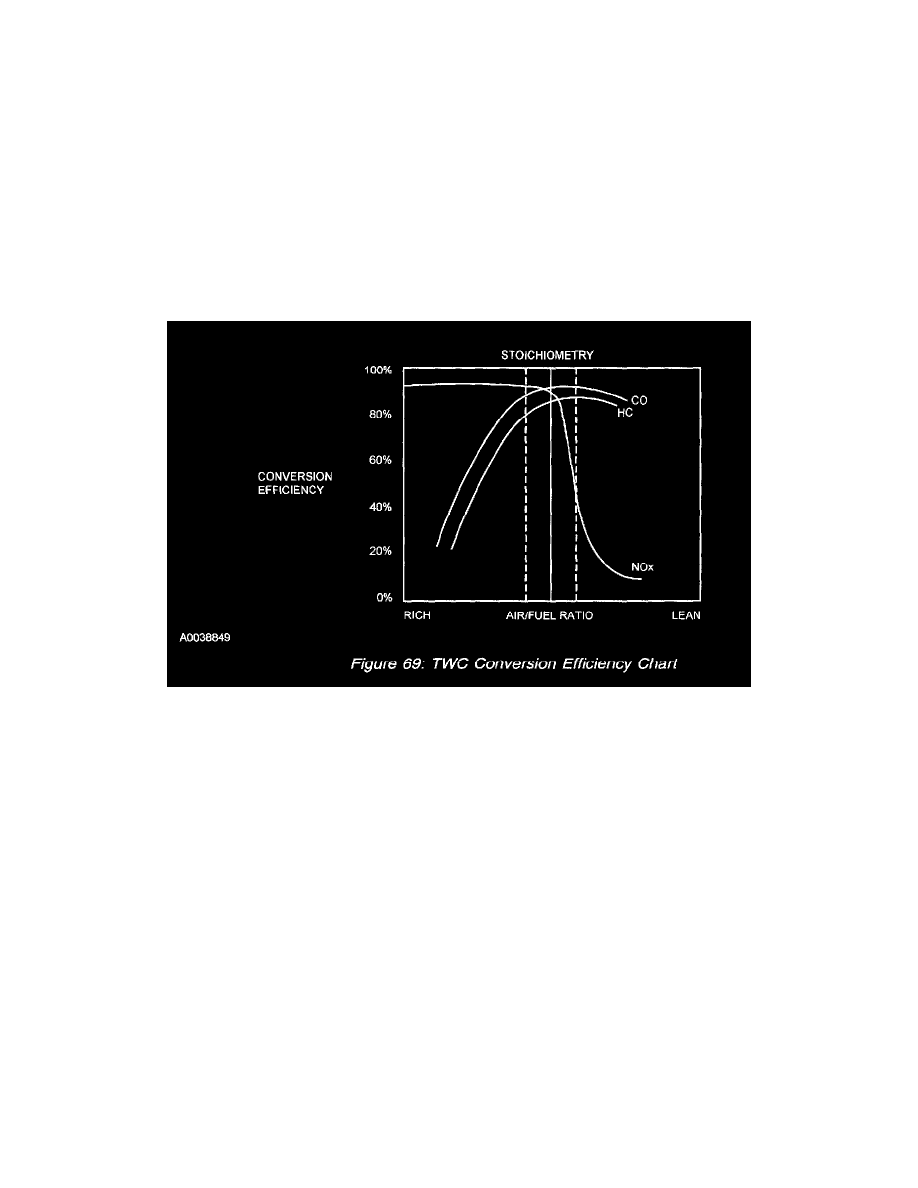Expedition 4WD V8-5.4L VIN 5 (2006)

4-cylinder engine, so only the bank 1 HO2Ss are used.
Catalytic Converter
A catalyst is a material that remains unchanged when it initiates and increases the speed of a chemical reaction. A catalyst also enables a chemical
reaction to occur at a lower temperature. The concentration of exhaust gas products released to the atmosphere must be controlled. The catalytic
converter assists in this task. It contains a catalyst in the form of a specially treated ceramic honeycomb structure saturated with catalytically active
precious metals. As the exhaust gases come in contact with the catalyst, they are changed into mostly harmless products. The catalyst initiates and
speeds up heat producing chemical reactions of the exhaust gas components so they are used up as much as possible.
Light Off Catalyst
As the catalyst heats up, converter efficiency rises rapidly. The point at which conversion efficiency exceeds 50% is called catalyst light off. For most
catalysts this point occurs at 246°C to 302°C (475°F to 575°F). A fast light catalyst is a 3-way catalyst (TWC) that is located as close to the exhaust
manifold as possible. Because the light off catalyst is located close to the exhaust manifold it lights off faster and reduce emissions quicker than the
catalyst located under the body. Once the catalyst lights off, the catalyst quickly reaches the maximum conversion efficiency for that catalyst.
Three-Way Catalyst (TWC) Conversion Efficiency
TWC Conversion Efficiency Chart
A TWC requires a stoichiometric fuel ratio, 14.7 pounds of air to 1 pound of fuel (14.7:1), for high conversion efficiency. In order to achieve these
high efficiencies, the air/fuel ratio must be tightly controlled with a narrow window of stoichiometry. Deviations outside of this window greatly
decrease the conversion efficiency. For example a rich mixture decreases the HC and CO conversion efficiency while a lean mixture decreases the
NOx conversion efficiency.
Exhaust System
